Iguazu Falls: A Backpacker’s Guide to Brazil & Argentina
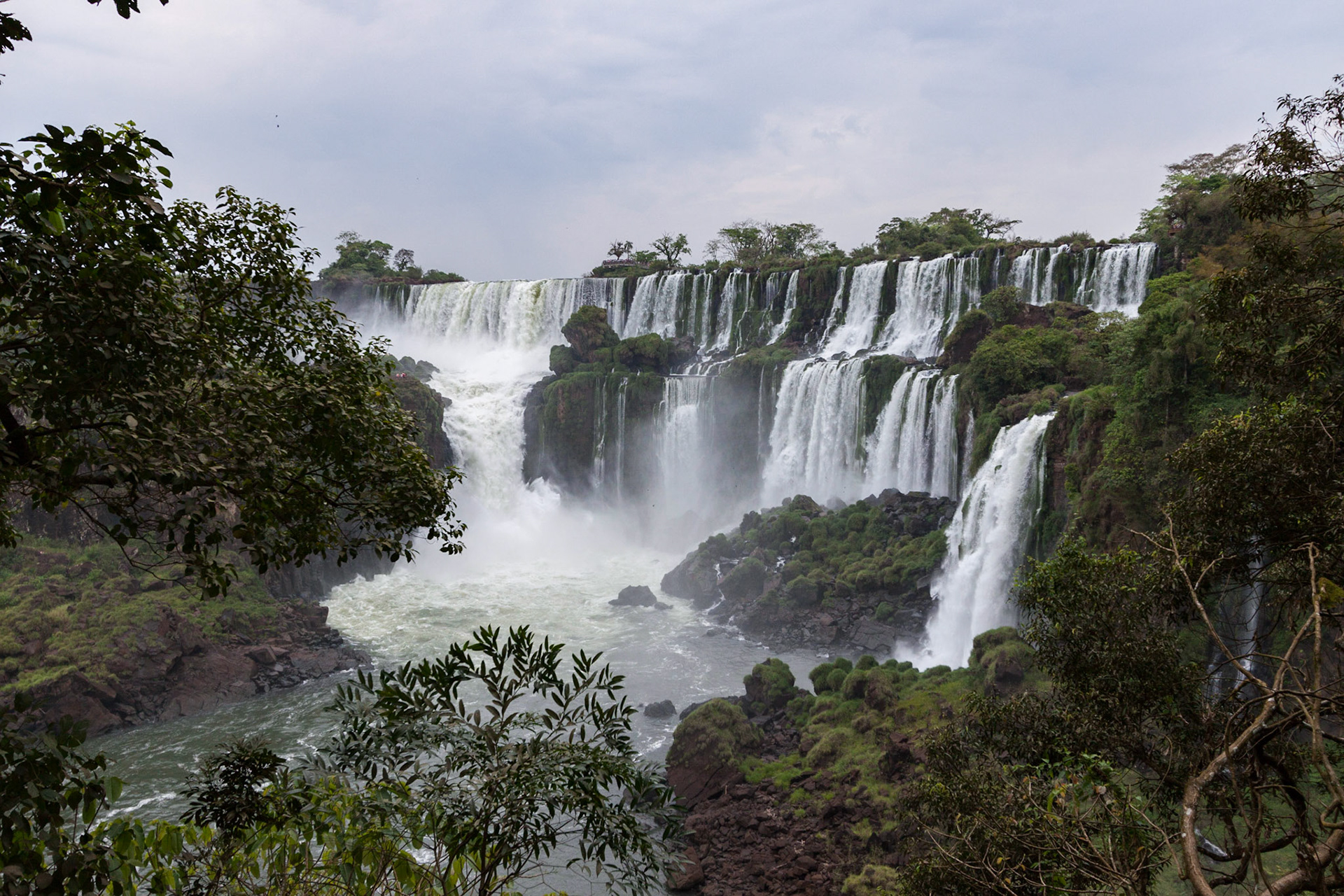
I didn’t expect much as we made our way to the famous Iguazu Falls from the Brazilian city of Florianopolis. In my mind it was just another one of those hyped-up tourist destinations that we had to hit, or else face the uncomfortableness of people’s baffled expressions when they find out that we were there but didn’t go- like if you were to say you went to Peru but didn’t go to Machu Picchu.
But unlike Machu Picchu- which I did find to be rather overrated, not to mention numbingly overcrowded- Iguazu Falls stunned my skeptical mind into silence (despite the obligatory hordes of tourists).
The massive waterfalls sit on the border between Brazil and Argentina, and visitors can access them from both countries for two very different experiences.
Iguazu Falls: Brazil Side
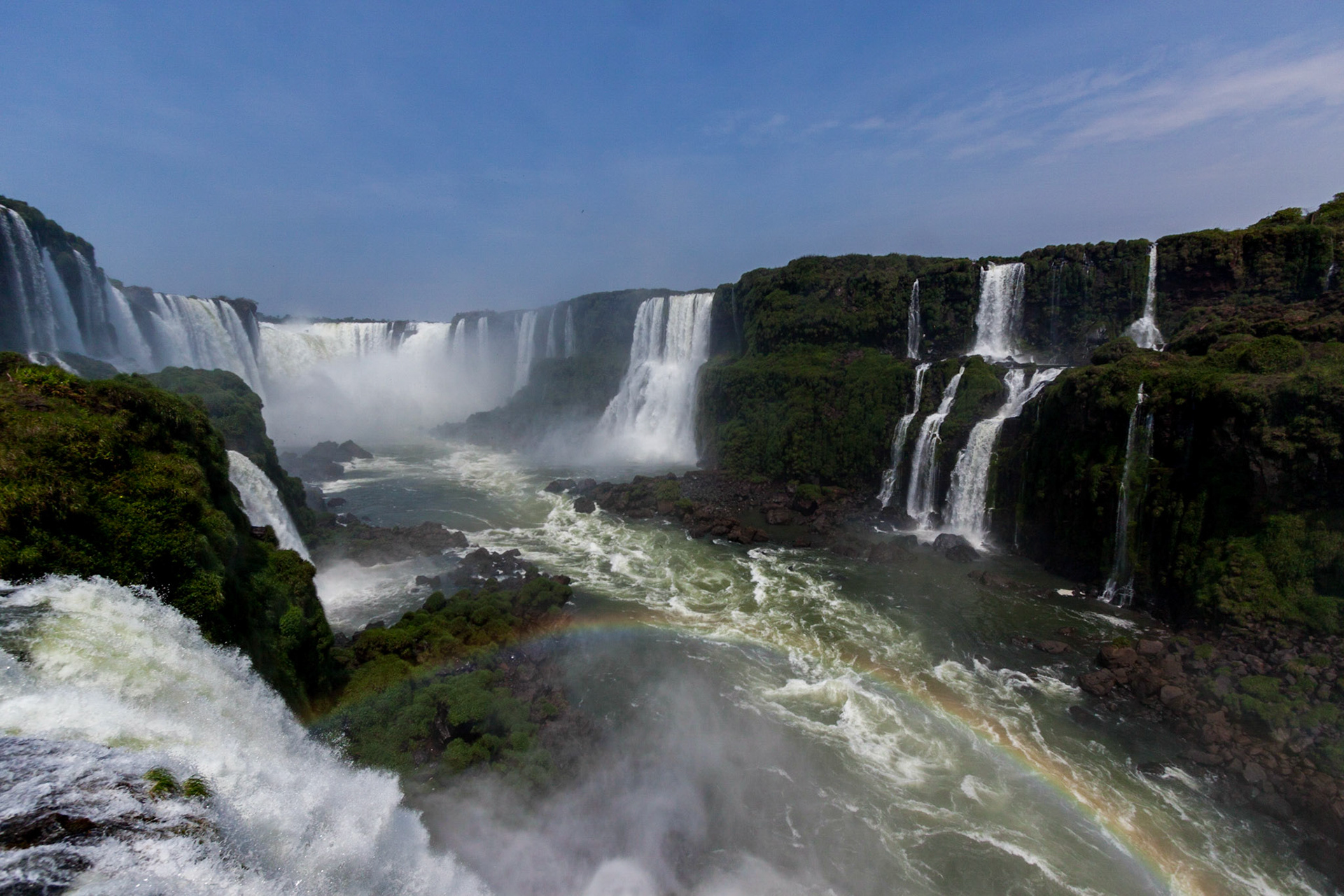
The Brazilian side gives you the perfect panoramic view of the shockingly impressive waterfalls. If it’s the first time you’re seeing them, the scene will leave you speechless. Iguazu will make Niagara Falls look like a drippy faucet.
Made up of almost 300 drops, the falls stretch for nearly 3 km, their grand finale a gargantuan tumult of water called the “Devil’s Throat.”
Approaching the falls from the Brazilian side is the best way to see their massive scope. Here’s how to do it.
How to get to the Brazil side of Iguazu
Starting from our hostel in the town of Foz do Iguaçu in Brazil, we took a local bus to Iguaçu National Park.
There are plenty of buses that go to the falls, and they are clearly marked with signs on the front. If in doubt, ask your hostel receptionist where you can catch one. It’s much cheaper than a taxi, and much much cheaper than going with a tour group.
The bus dropped us off at the entrance to the national park, where we purchased tickets for R$62 (about 18 USD)/person. From there, a park bus will take you to the falls (the price is included in the ticket cost).
You can walk alongside the falls on the wooden platforms and take in the view. On the Brazilian side, you are facing the falls from across the river. In order to get up close, you must go to the Argentinian side.
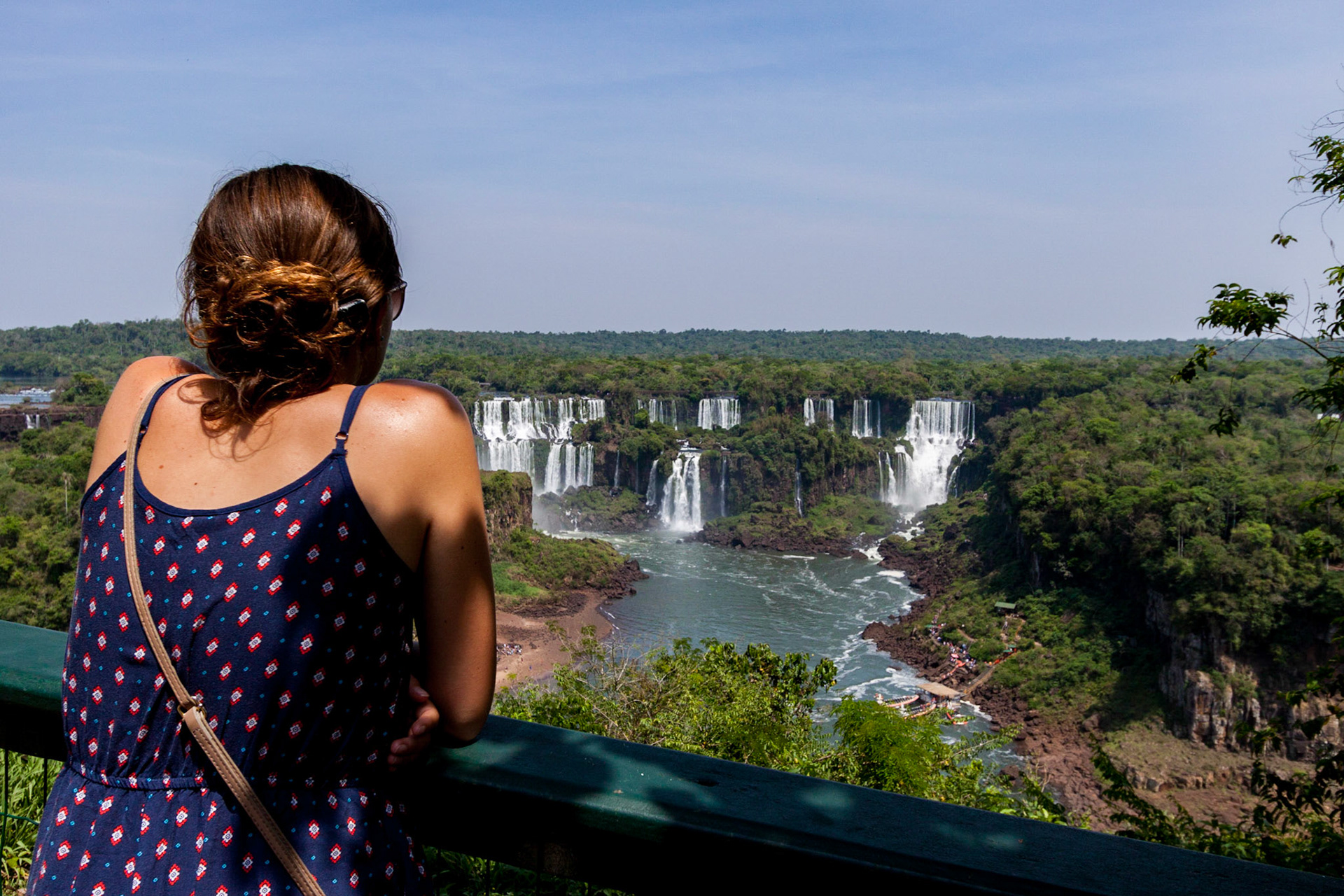

Iguazu Falls: Argentina Side

The Argentinian side is where things get even more interesting. Here, the platforms run directly over the falls, winding through various paths where you can experience different views.
They take you right up to the mammoth opening of the Devil’s Throat. Only here does the thundering of water consume your senses. You can feel the spray on your skin, and the endless rolling of the falls hypnotizes you into an awed state.
You can also take a boat to an island to see the falls from closer up (included in the price of the entrance ticket). If you still don’t think you’ve gotten close enough (and don’t mind getting soaking wet), you can go underneath the falls by paying an extra 500 ARS (~ 25 USD) for a boat to take you on a sopping adventure.
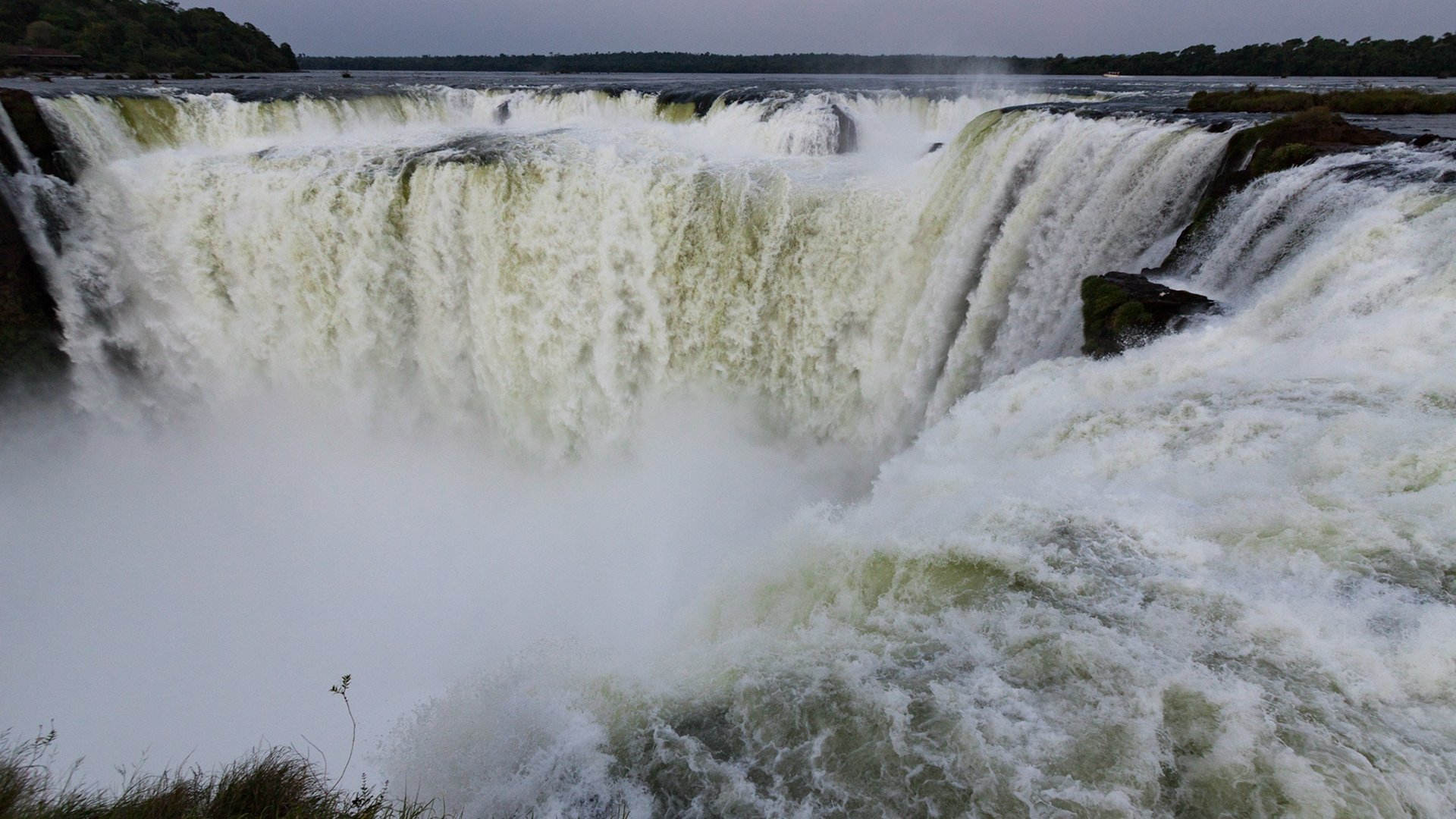
How to get to the Argentinian side of Iguazu
From our hostel in Foz do Iguaçu in Brazil, we again took a local bus, this time to the border.
These buses are also plentiful and clearly marked, but be sure to ask your receptionist so you don’t get confused.
Brazil & Argentina Border Control
The bus drops you off at the Brazilian border control, where you get your passport stamped. After this quick procedure, you can wait for the next bus to come and then hop off after a couple kilometers when it gets to the Argentinian border control. Here, you get your passport stamped again by the Argentinian authorities.
The bus will usually wait for you at the Argentinian border control until you get your passport stamped, and then take you to a bus stop in Puerto Iguazú- the Argentinian border town (if the bus doesn’t wait, don’t worry, another one will come along- just remember to keep your bus ticket receipt because you may be able to use it again if it’s the same bus company).
National Park Entrance
From the bus stop in Puerto Iguazú, there are a bunch of buses that go straight to the national park. You’ll probably also be offered taxis- just make sure you don’t get ripped off. A bus ticket to the national park should be around 25 ARS. A cab could end up costing similarly, depending on the number of people in your group (it shouldn’t be more than ~75 ARS total).
Once you’re at the national park entrance, you’ll pay for a ticket (500 ARS) and receive a map, and then you can take the park train to the start of several different trails that go around the falls.
We recommend taking the train to the Devil’s Throat in the late afternoon, when the crowds thin out a bit. Just make sure you have enough time there before the last train leaves to go back to the park entrance.
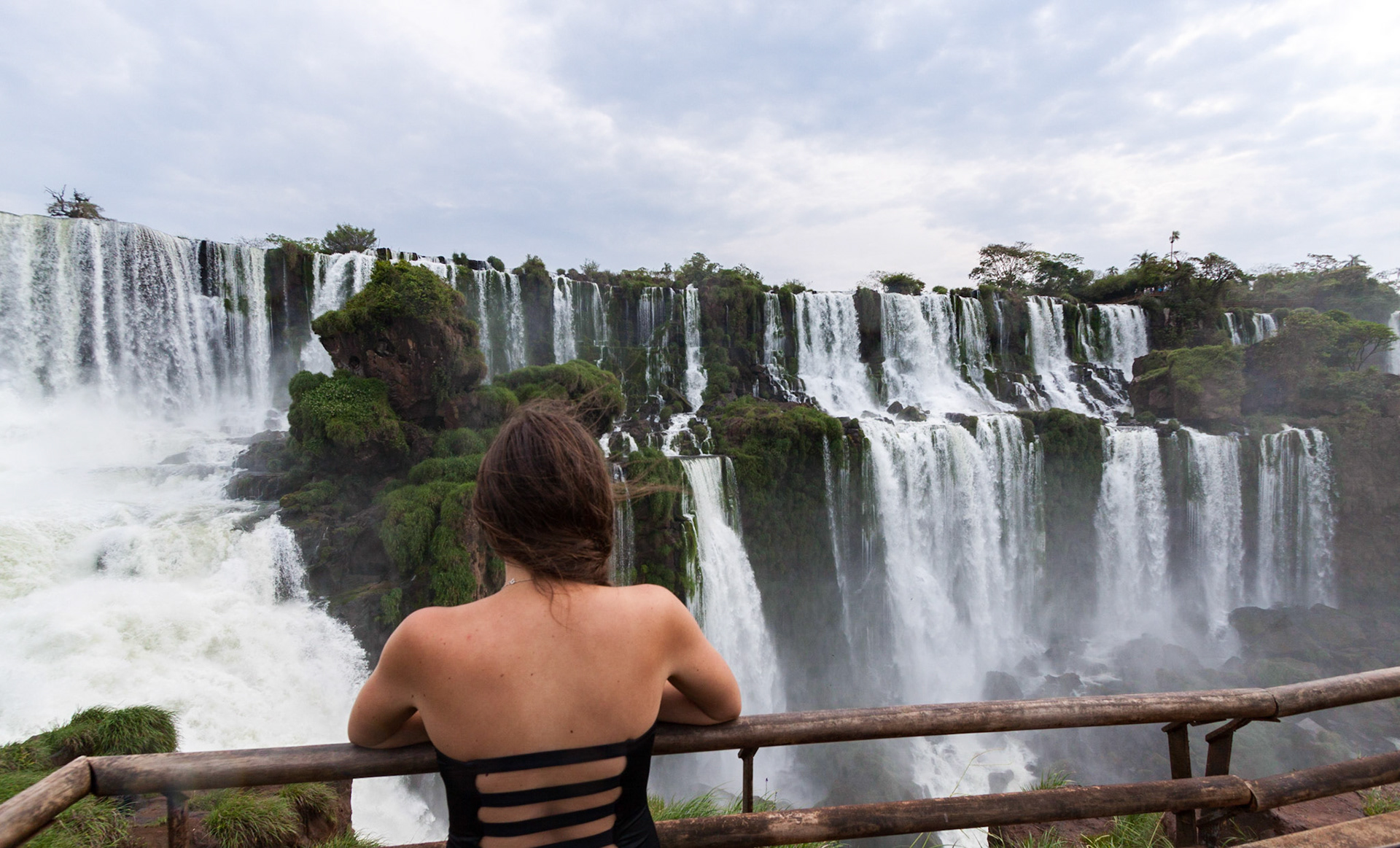
Which Side is Better?
We would strongly recommend visiting both the Brazilian and Argentinian sides, dedicating one day for each side.
The Brazilian side is best for the big picture. From here, you can really observe the full scope of the falls and see them stretch on and on for kilometers.
The Argentinian side is best for getting a more close up experience. On this side, you can stare straight down into the gigantic Devil’s Throat, walk right above the cascades, and even get drenched directly underneath the waterfalls.
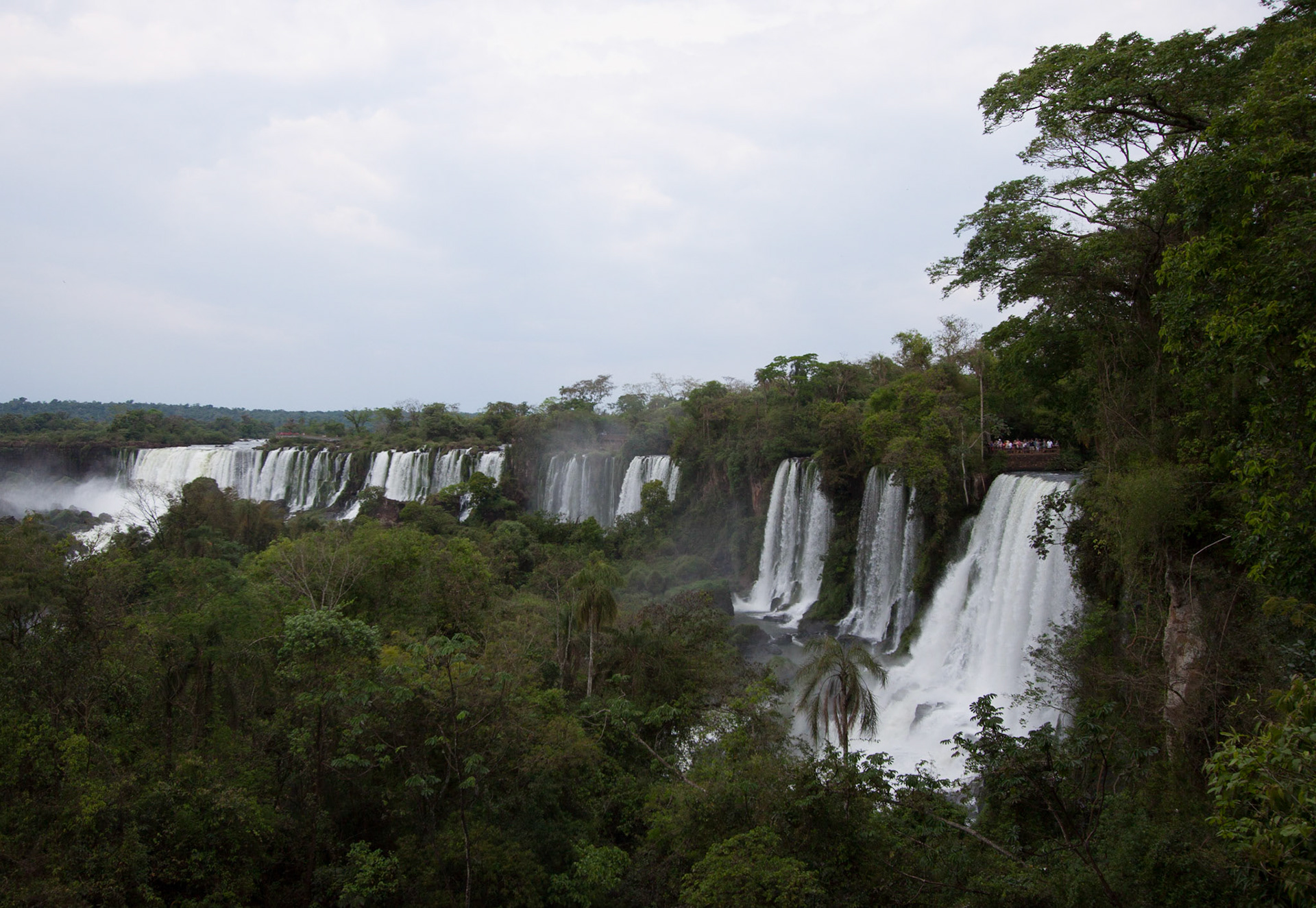
Worth it? Oh yes. Even with tourists being more plentiful than water at the falls, this is not a sight to miss.
What to bring: Sunscreen, swimsuit under your clothes (if you’re doing the boat ride), sunglasses, comfortable shoes, camera, money.
– Iris & Roi
Questions about navigating the two sides of Iguazu Falls? Let us know in the comments and we’ll do our best to answer!
You must be logged in to post a comment.